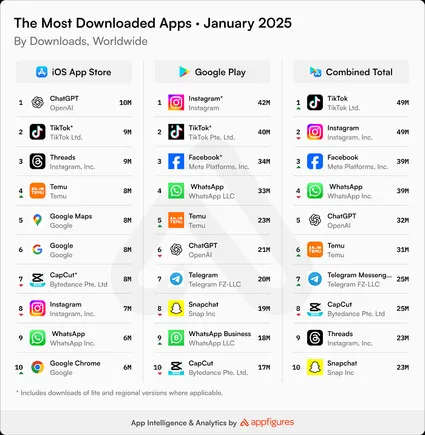Tariff Shockwaves: The $328 Billion Impact Reshaping US Manufacturing
How do country-specific tariff rates impact different segments of the US manufacturing sector? This question has manufacturers scrambling as trade policy shifts ripple through global supply chains.

This question has manufacturers scrambling as trade policy shifts ripple through global supply chains. Our analysis reveals a staggering $328.2 billion annual impact on US manufacturing—nearly 5 cents of every revenue dollar now diverted to tariff expenses. This headline number masks a complex mosaic of winners and losers. Some sectors absorb minimal disruption while others face existential challenges, largely due to international sourcing patterns developed over decades that are now being tested. The vulnerability equation is straightforward yet profound: manufacturing necessitates substantial material costs, material costs include imported components and raw materials, and these imports now face significant country-specific tariffs. Following this cascade reveals how the seemingly abstract concept of tariffs translates into concrete bottom-line impacts for manufacturers. Note: This analysis reflects the initial April 2 tariff schedules only and does not account for subsequent developments. To understand how we arrived at this figure, let's walk through the progression of costs and impacts: This cascade effect demonstrates how even seemingly modest tariff rates compound through the supply chain to create substantial financial impacts. The new tariffs effectively translates to a nearly 5% tax on total manufacturing activity nationwide. It's important to note that this analysis is based solely on the initial April 2 tariff schedules and does not account for subsequent developments in the rapidly evolving trade environment. The disparities in tariff impact across manufacturing sectors create a fascinating study in vulnerability and resilience. Some giants of American industry now find themselves shouldering burdens measured in tens of billions, while other sectors face margin compression that threatens their very survival. Transportation equipment manufacturers—from automotive to aerospace—are writing the largest checks, with tariffs extracting an eye-watering $83.2 billion annually. This figure represents over 7% of the sector's massive $1.1 trillion revenue base and reflects decades of globalized supply chain development that can't be unwound overnight. Yet the relative impact tells an even more compelling story for smaller sectors. America's already-struggling textile mills and apparel manufacturers are absorbing tariff hits exceeding 7% of revenue—potentially the difference between survival and closure for many facilities already operating on razor-thin margins. These sectors face a perfect storm of vulnerability: high import dependency (58-61%), punishing tariff rates (29-31%), and limited pricing power in fiercely competitive global markets. The "double exposure" of high import reliance combined with steep tariff rates creates particularly toxic conditions. Computer and electronic product manufacturers exemplify this challenge, with 58% of their materials coming from overseas and facing a 28% average tariff rate. This marriage of dependency and taxation helps explain why this sector bears a $22.7 billion annual tariff burden despite being significantly smaller than automotive or petroleum manufacturing. The current tariff regime creates a complex web of competing objectives and unintended consequences. A fundamental tension exists: tariffs generate substantial government revenue while theoretically encouraging domestic manufacturing growth, yet simultaneously harm the very sectors they aim to protect. The tariff policy objective—revitalizing American manufacturing by disadvantaging foreign production—faces significant challenges. The immediate effect will be margin compression for US manufacturers reliant on established global supply chains. For many companies in textiles, electronics, and transportation, these supply chains cannot be quickly reconfigured without massive capital investment. This creates a strategic paradox: The capital expenditure needed to expand domestic manufacturing capacity ($1+ trillion) represents a high-risk bet few corporate boards will make amid economic uncertainty. Companies must ask: Will a trade-war-induced economic contraction undermine domestic demand before new facilities are completed? What happens if tariffs are eventually rescinded, leaving new American factories competing directly with lower-cost foreign producers? The circular nature of the problem becomes evident when considering who ultimately bears tariff costs. While designed to tax foreign producers, much of the burden shifts to domestic manufacturers and American consumers, potentially dampening the economic growth needed to sustain manufacturing expansion. Meanwhile, retaliatory tariffs create additional headwinds for export-oriented American manufacturers. The endgame remains uncertain. Some manufacturers adopt a "wait and see" approach, delaying major capital decisions. Others pursue targeted reshoring of critical components while maintaining global sourcing for non-strategic inputs. A growing segment embraces automation and advanced manufacturing techniques—potentially creating fewer jobs than policymakers envision. What seems increasingly clear is that tariffs alone cannot overcome the fundamental economic advantages driving global manufacturing location decisions. Without complementary policies addressing workforce development, regulatory streamlining, energy costs, and technology adoption, the manufacturing renaissance envisioned by tariff proponents may remain elusive, while costs continue to mount across American industry. Kentley Insights has in-depth tariff analysis across 500+ manufacturing industries with material cost breakdown, import statistics, tariff impact by material, and source country analysis. The reports have over 100 industry statistical data sets with historicals (2016-2024), trend analysis, and forecasts for 2025 and the next 5 years. The reports includes market size & growth, in-depth OPEX analysis on 26 categories, extensive financial analysis, forecasts, plant inventory analysis, detailed breakdown of 31 balance sheet items, company segmentation analysis, industry concentration analysis, material costs benchmarks, profitability metrics, state statistics, plant capacity analysis, employee role analysis, 4 years of inflation analysis, compensation analysis, in-depth productivity analysis, and numerous other data sets. This analysis combines data from multiple authoritative sources. Revenue and material costs are derived from extensive government agency business surveys, while import percentages represent research-based estimates of international sourcing. Tariff rates reflect official blended rates published by the White House. Our calculation approach determines material costs as a percentage of revenue, calculates import values based on estimated import shares, and applies the applicable tariff rates to these import values. Note: Total Manufacturing Revenue does not equal Manufacturing GDP because GDP in the US is calculated based on economic value-add, not total receipts. Disclaimer: This analysis is intended for informational purposes only and should not be construed as investment, legal, or tax advice. While we strive for accuracy, the dynamic nature of international trade policy means actual impacts may differ from those estimated. Joe Newsum is a strategy and benchmarking expert, with over 20 years of experience supporting companies in developing and executing strategy. As CEO of Kentley Insights, Joe leads his team in providing companies with insightful industry and market data. Previously, Joe was a strategy consultant at McKinsey & Company and Mercer Management Consulting. He has an MBA from the Tuck School of Business at Dartmouth and a B.S. from Stanford University. How do country-specific tariff rates impact different segments of the US manufacturing sector?
How do country-specific tariff rates impact different segments of the US manufacturing sector?The Manufacturing Tariff Cascade

The Manufacturing Pain Index: Who's Feeling the Squeeze
What Is the End Game?
About Kentley Insights
Data Sources & Methodology
About the Author

 AbJimroe
AbJimroe 



















![The 2026 AI Search Benchmark Every SEO Leader Needs [Webinar] via @sejournal, @lorenbaker](https://www.searchenginejournal.com/wp-content/uploads/2025/11/1-259.png)











